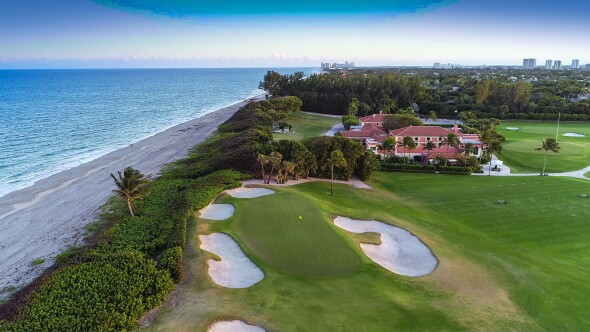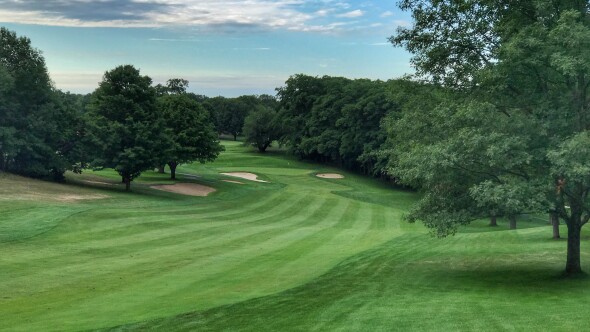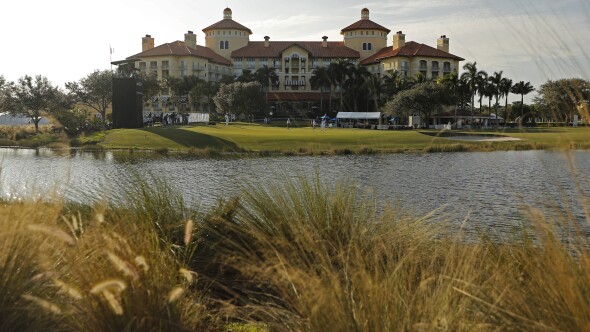For a course featuring 18 renditions of holes from all over the world, one of the things I like the most about playing the Donald Ross Memorial at Boyne Highlands Resort is for the fact it feels so cohesively "Northern Michigan."
Having played a handful of the original Ross designs from which the course borrows (from Royal Dornoch, where he grew up, to his triumph at Pinehurst No. 2), my takeaway was that, whether you care to examine the originals down to the inch or not, it's just a flowing and quiet round with some exciting golf shots and solid variety of greens.
The Ross Memorial was built during the 1990s golf resort boom in Northern Michigan. The story goes that Boyne founder Everett Kircher, longtime Boyne Sr. VP of Golf Operations Bernie Friedrich, architect Bill Newcomb and Jim Flick traversed the globe visiting and playing over 50 Ross courses. Oh, to go back to 1990s R&D budgets in golf!
The Ross Memorial helped usher in a roster of replica-style courses during the 90s boom years of rapid growth of resort and upscale "destination" golf courses coast-to-coast (see also: Architects, Tour 18, Renditions, Bear's Best, World Tour, etc.).
What's notable is that at this point in time, replicas were being created based on original holes that themselves had been extensively modified since their early days. For example, The Ross Memorial course culminates with one of the most infamous holes in the Ross portfolio: The 16th hole at Oakland Hills South. But that course was toughened by Robert Trent Jones, Sr. prior to the infamous 1951 U.S. Open when Ben Hogan "Brought this course, this monster, to its knees."

As we've cruised through the leaner and meaner 21st century of golf course architecture, restoration and renovations have trumped new course builds. A new breed of neoclassic architects has studiously studied Golden Age designs and uncovered their original presentations and philosophies thanks to early aerial photography or site plans. These studies typically revealed fewer trees, wider fairways and bolder, larger greens.
The project that really ignited the movement was Coore & Crenshaw's restoration of Pinehurst No. 2 prior to the 2014 U.S. Open from its grassy and manicured state that evolved in the 1960s and 70s back to its wispy, sandhills original nature of Ross' time. It unleashed a wave of Carolina Sandhills Ross renovations. Kyle Franz restored Ross' other famous resort courses at Pine Needles and Mid Pines, and is currently doing the same to Southern Pines. Gil Hanse was tapped by Pinehurst ownership to bring Pinehurst No. 4, which bordered the throwback No. 2, back to a similarly rugged, sandier aesthetic.
Scores of historic private clubs with Ross and other Golden Age designs have aggressively sought out top historians and architects to restore their layouts, and that includes Donald Ross' Seminole Golf Club in Florida, site of this week's Walker Cup host. Coore & Crenshaw recently worked their magic here to help bring out Ross' original intent.
Updating the Ross Memorial at Boyne Highlands
If historic courses are being renovated out of their modern, manicured states back to its more original intent, shouldn't replica courses follow suit? That's the idea at Boyne Highlands. They've enlisted Michigan architect Ray Hearn to enhance many of the holes into an even more authentic appearance. Among the first holes getting a facelift is the opening hole, inspired by the relatively short, par-4 6th hole at Seminole. While the proposed revision doesn't exactly match up with Seminole's, it's clear Hearn intends to transform many of the treed areas into something more open and sandy - something that not only feels more like South Florida but also adds a pleasing sense of place off the first tee of this property that isn't far from Lake Michigan.

Achieving an exact match would require most notably a subtle change in green angle and moving the cart path right of the green to add more turfed area near the bunkers. The closer Hearn can ultimately come to achieving authentic Ross shot values here and on other holes (the Memorial has two holes rendered from Pinehurst No. 2 - the par-4 2nd and 14th holes - that will require a similar de-turfing and sanding to achieve an accurate appearance), the more fruitful it will be for the legacy of the Memorial and architecture enthusiasts will take notice.
The target may always be moving. After all, Hanse was just tapped to renovate Oakland Hills, so upon completion there, the Ross Memorial's closer will need re-examination.
Northern Michigan has enjoyed a renaissance of golf catering to the classic architecture crowd, fueled by the success of Mike Devries' private throwback, the Kingsley Club near Traverse City and the resurgence of Willie Watson's 1920s semi-private Belvedere Golf Club. In the last five years, Dana Fry opened Arcadia Bluffs South, a course that pays homage to the style of C.B. Macdonald and Seth Raynor. Tom Doak built The Loop at Forest Dunes in a reversible and bouncy fashion akin to the Old Course at St. Andrews. The destination's splashy, challenging modern resort courses of the 1990s are stepping aside to make room for these more classically inspired designs. The combination of the two styles has kept Michigan near the top of the most coveted golf destinations in the world.

 Back
Back




















